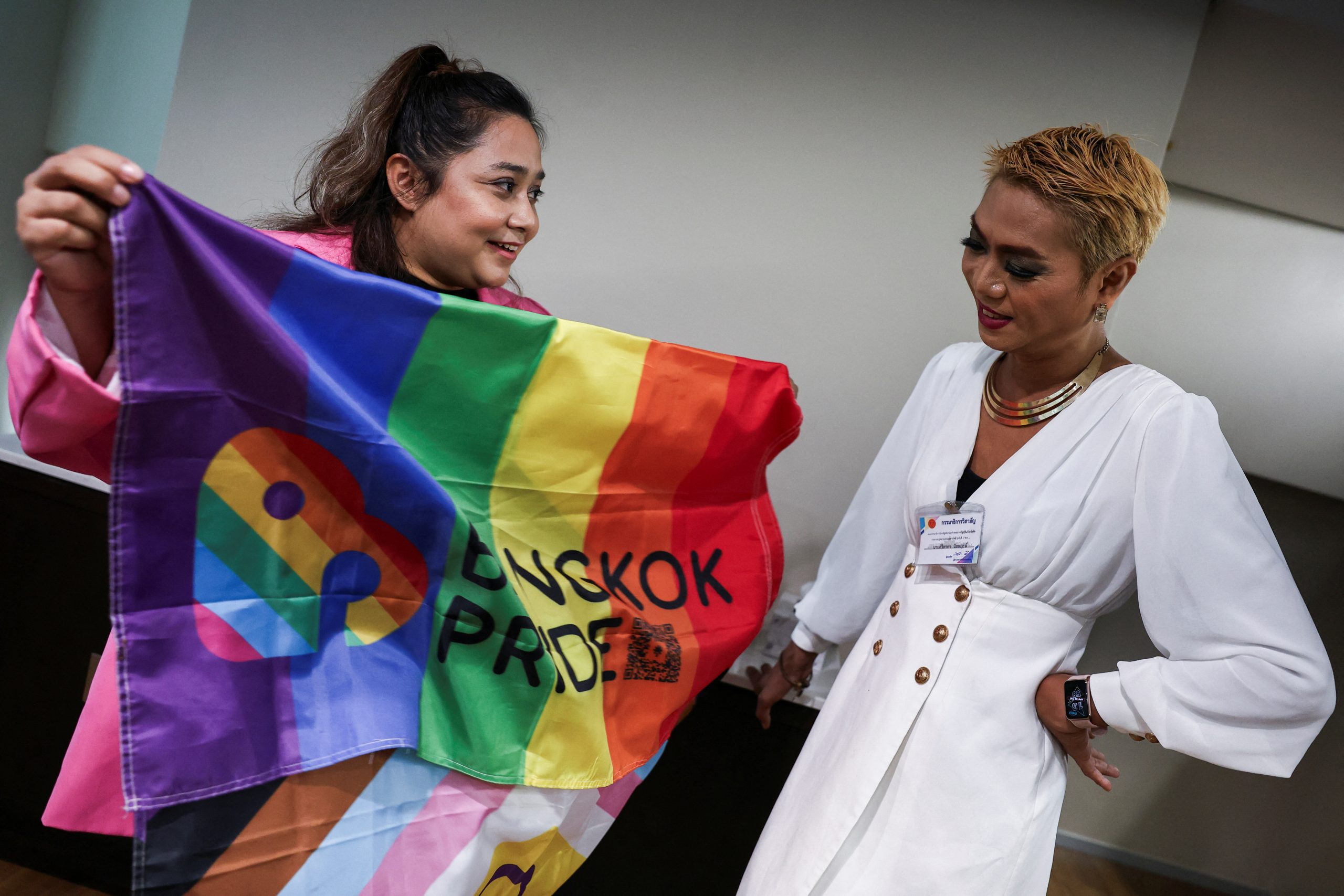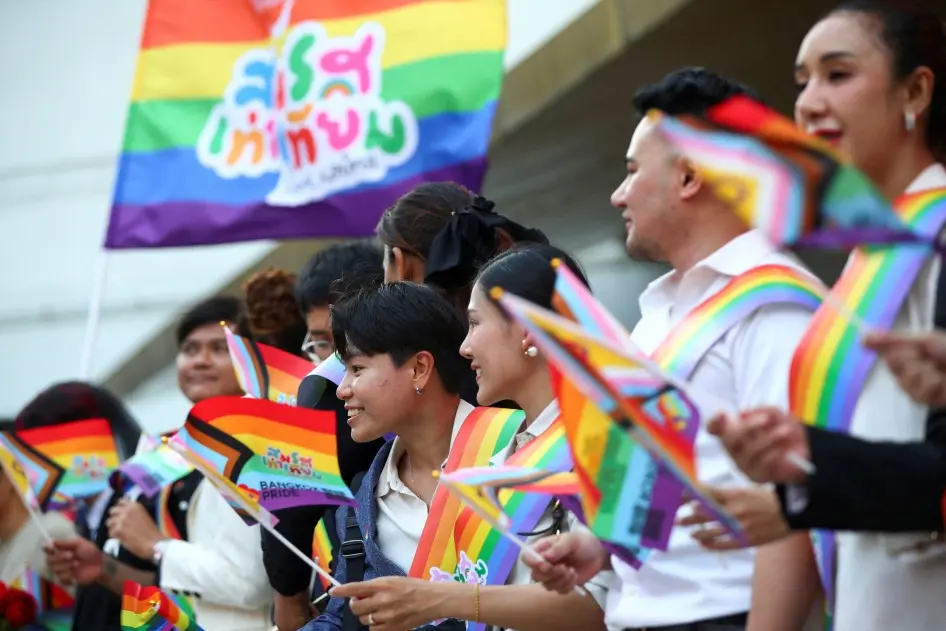Legal
Calvin Lo: Unraveling the Complexity of a Corporate Titan and Philanthropist

Calvin Lo, a Hong Kong businessman, embodies a unique enigma in the global corporate landscape. As the CEO of R.E. Lee International, he has achieved considerable success, complemented by his innovative work in philanthropy through The 195 Project. Unlike many of his peers, Lo shuns the limelight, preferring a life away from public scrutiny. This low-profile approach adds an element of mystery to his character, especially amid recent developments.
The turning point was a controversial article, which Lo viewed as a targeted smear campaign against him. In a rare move to safeguard his privacy and reputation, he filed a complaint with the Royal Thai Police against the article’s authors, Robert Olsen, John Kang, and Zinnia Lee. This unusual step into the public domain, taken to defend his reclusive lifestyle, provides a rare insight into the complex and multifaceted personality of Calvin Lo.
R.E. Lee International: A Legacy of Excellence
Founded in 1954, R.E. Lee International has risen to prominence in the insurance industry, a journey marked by significant milestones and a relentless pursuit of excellence. At the helm of this impressive trajectory is Lo, the CEO, whose strategic vision and leadership have been pivotal in transforming the company into a global powerhouse. Under Lo’s leadership, R.E. Lee International has expanded its operations to serve clients in over 65 countries, a clear indicator of its robust global presence.
The company’s headquarters in Hong Kong stands as a beacon of its international success, supplemented by strategically located offices in Singapore, Dubai, Shanghai, Zurich, and the Cayman Islands. These key locations are not just geographical expansions but represent strategic footholds in diverse markets, allowing the company to tailor its services to meet local needs while maintaining a global perspective.
One of the most notable achievements under Lo’s leadership has been the company’s consistent record of double-digit growth. This sustained success is not just a reflection of Lo’s ability to navigate the complex landscapes of global markets, but it also showcases his foresight in adopting innovative approaches and adapting to changing market dynamics. His leadership style is characterized by a unique blend of visionary planning and pragmatic execution, enabling R.E. Lee International to stay ahead in a competitive and ever-evolving industry.
Lo’s impact on R.E. Lee International goes beyond mere financial growth; it’s about setting new industry standards and fostering a culture of excellence and innovation. The company’s growth trajectory under his leadership is a testament to an enduring legacy and a forward-looking approach, positioning R.E. Lee International not just as a participant but as a dynamic leader in the international insurance sector. This legacy of excellence, guided by Lo’s visionary leadership, sets a high bar for competitors and serves as an inspiration for the entire industry.
The 195 Project: A Beacon of Hope in Charity
The 195 Project, established in 2020 by Lo, represents a major stride in the landscape of philanthropy. As a branch CFL Initiative, Lo’s $245 million personal charity foundation, The 195 Project is not just a non-profit think tank but a beacon of hope and innovation in the aftermath of COVID-19.
Dedicated to exploring how the global economy can adapt and recover after the pandemic; this initiative delves into extensive research on the most effective ways to respond to the economic and social challenges wrought by COVID-19. This research informs its mission of transcending traditional philanthropic efforts, focusing on cultivating more effective and empathetic giving in a world forever changed by the pandemic.
At the heart of The 195 Project is a globally diverse team of experts and advisors. This assembly of minds from various domains brings together their unique insights and recommendations on pivotal areas such as health, education, the environment, and social justice. Their collaborative efforts are geared towards not only understanding the complexities of these sectors in a post-COVID-19 context but also implementing strategies that will lead to tangible, positive changes.
The 195 Project stands as a symbol of proactive change, exemplifying the potential of thoughtful philanthropy to build a more resilient and inclusive future for humanity. It is a clear testament to Lo’s vision of a philanthropic approach that not only addresses immediate needs but also lays the groundwork for sustainable, long-term improvement in critical sectors of global importance.
A Figure Shunning the Limelight
Lo, who steadfastly avoids the glare of the public eye, never sought recognition in any wealth rankings. By all accounts, his estimated net worth hovers around US$2 billion. This preference for a low profile prompts us to reflect on the complexities and challenges faced by public figures in the digital age. It also raises questions about the delicate balance between personal reputation, public perception, and the freedom of the press, all while shedding light on the concealed struggles accompanying high-profile success and the intricate narratives woven behind influential public figures.
Navigating Success with Discretion
Lo’s journey, marked by its highs in business and philanthropy, presents a captivating case study of the modern-day business tycoon who deliberately remains in the shadows. His ability to navigate these diverse realms not only underscores his business acumen but also showcases his resilience in the face of adversity. Calvin Lo’s steadfast commitment to a low profile adds an extra layer of intrigue to this complex public figure’s enigma.
SEE ALSO: Law Firm Chastised for Using OpenAI ChatGPT for Legal Research

Legal
Thai Court Amends Law to Allows Wives to Sue Husband’s Lovers

Thailand’s Constitutional Court has changed the Civil Code will allow women to sue their husbands’ lovers, male or female. The Constitutional Court found on Tuesday that Section 1523 of the Civil Code breached Section 27 of the constitution, which safeguards Thais’ rights and liberties regardless of gender.
The court directed that the verdict be enforced within 360 days.
Section 1523 of the Civil Code states that husbands can sue their wives’ lovers, and wives can sue other women who publicly display an adulterous connection with their husband.
Keirov Kritteeranon, secretary-general of the Office of the Ombudsman, stated that the Ombudsman had previously urged the court to rule on the legality of Section 1523, which allowed wives to suit only female lovers.
Husbands can now sue their wives’ boyfriends regardless of gender, and there was no requirement for any public declaration of an adulterous connection, he claimed.
Once enforced, Tuesday’s Constitutional Court order, according to the Ombudsman, will correct this imbalance.
Thailand Amends Marriage Law
Meanwhile, Thailand is set to become the first Southeast Asian country to recognise same-sex marriage, after its marriage equality law was passed in the Upper House on Tuesday and is now on its approach to being promulgated before going into effect in the coming months.
LGBTQ+ advocates rejoiced as the Senate voted 130-4 to pass the bill on its final reading, with 18 abstentions. They hailed the development as a win in their long struggle for equal rights.
When the advocates who had gathered at parliament on Tuesday to witness the Senate’s final reading and vote on the measure heard the outcome, they burst out in cheers.
They next went to authorities House, where the authorities had planned a celebratory reception for them later in the day. They then went to the Bangkok Art and Culture Centre, where the party lasted until late at night.
Prime Minister Srettha Thavisin, who is on sick leave due to Covid-19, congratulated them via Zoom call from Government House.
The new law will allow any two people aged 18 or older to register their marriage and obtain the same advantages and rights as heterosexual couples. The bill refers to married couples as “two individuals” rather than “a man and a woman,” and changes their legal status from “husband and wife” to “spouses.”
LGBTQ+ people from any country can legally marry in Thailand. When the bill goes into force, foreign same-sex married partners will be eligible for a spousal visa.
The law will be sent to the government for approval before being presented to the monarch.
It will take effect within 120 days of its publication in the Royal Gazette, making Thailand the third Asian country to accept same-sex marriages after Nepal and Taiwan.
Senator Kamnoon Sidhisamarn, spokesman for the Senate’s special committee evaluating the proposed law, called it a victory for equal rights campaigners.
“There is no reason for the Upper House to disagree with the judgement made by the House of Representatives,” he told reporters. He was referring to the legislation’s passage in the Lower House prior to its submission to the Senate for approval.
The battle for same-sex marriage legislation began 23 years ago. Tunyawaj Kamolwongwat, a Move Forward Party list-MP, said that the law’s passage on Tuesday signified the beginning of a new chapter in Thai history.
Source: Bangkok Post
Court Upholds Israel’s Ban on News Agency Al Jazeera
Legal
Thailand’s Senate Passes Landmark Marriage Equity Bill Legalizing Gay Marriage

Thailand’s Senate has approved a long awaited marriage equality bill on Tuesday, making the country the third Asian country to accept same-sex couples. The Senate approved the law 130-4 with 18 abstentions.
The marriage equality bill will be sent the palace for royal clearance. The marriage equality law takes 120 days to take effect after Royal Gazette publication.
LGBTQ+ advocates welcomed the proposal a “monumental step forward” because Thailand would be the first Southeast Asian country to legalise marriage equality. Thailand is popular with travellers due to its LGBTQ+ culture and tolerance.
“This would underscore Thailand’s leadership in the region in promoting human rights and gender equality,” the Civil Society Commission of marriage equality, activists, and LGBTI+ couples said.
Prime Minister Srettha Thavisin, who wore a rainbow shirt to commemorate Pride Month, joined thousands of LGBTQ+ revellers and activists in a Bangkok parade at the start of June.
The prime minister will open Government House to commemorate the bill’s passage. Pride supporters will march from Parliament to the prime minister’s office. Mr. Srettha, who has Covid-19, will join them online after taking several days off.
Deputy Prime Minister and Commerce Minister Phumtham Wechayachai anticipates June’s Pride Month to create approximately 4.5 billion baht in economic cash flow.

Pride Month in Thailand
On Saturday, Mr. Phumtham said the government under Prime Minister Srettha Thavisin is encouraging sexual diversity and working with the commercial sector to plan more Pride Month festivities to attract LGBTQ+ tourists.
He claimed it will increase the country’s trade potential by giving SMEs business expansion chances and adding soft power value.
Mr. Phumtham claimed Poonpong Naiyanapakorn, director-general of the Trade Policy and Strategy Office, told him Pride Month celebrations will make Thailand a “pride-friendly destination” for LGBTQ+ Thai and global consumers.
This would help the country become a regional tourism hub under the government’s “Ignite Tourism Thailand” initiative to enhance tourism in 55 “worth visiting” provinces.
He added that such festivals will support downstream industries like event planners, food and beverage companies, hotels, and transport services and disperse cash to local areas. Mr. Phumtham stated Thailand’s Pride Month began in 1999. Bangkok, Chiang Mai, Phuket, and Chon Buri host parades, festivities, and campaigns.
The Tourism Authority of Thailand (TAT) expects approximately 860,000 people to attend this year’s festival and contribute at least 4.5 billion baht for the economy. LGBT Capital estimates that the world’s LGBTQ+ population has US$4.7 trillion in purchasing power and Thailand’s sexually varied population has US$26 billion.
LGBTQ+ rights in Thailand are improving, but there’s still much to do. The LGBTQ+ community in Thailand is notably strong in Bangkok and Pattaya.
Strong legal recognition allows transgender people to change their names and titles. Many LGBTQ+ couples lack legal rights since same-sex marriage is banned.

LGBTQ+ rights in Thailand
Thailand is becoming more accepting despite these difficulties. LGBTQ+ rights are gaining favour. Activists want legal changes to guarantee equality.
Pride parades are becoming increasingly visible, demonstrating diverse acceptance. While challenges remain, LGBTQ+ rights in Thailand are improving as awareness and acceptance expand.
Legal
Protecting Your Designs: Intellectual Property Rights in the Jewelry Manufacturing Industry

The jewelry manufacturing industry is a vibrant and highly competitive sector where creativity and innovation are paramount. Designers invest significant time, effort, and resources into crafting unique pieces that appeal to consumers’ tastes and preferences. However, this industry faces a persistent challenge: the protection of original designs from imitation and unauthorized use.
Intellectual property rights (IPR) play a crucial role in safeguarding jewellery designs, ensuring that creators receive recognition and financial benefits from their work. This article delves into the various forms of intellectual property rights pertinent to the jewelry manufacturing industry and offers insights on how designers can protect their creations.
Understanding Intellectual Property Rights
Intellectual property rights are legal mechanisms that grant creators exclusive rights to their inventions, designs, and artistic works. These rights encourage innovation by providing creators with the means to control the use of their creations and to benefit financially from them. In the context of jewelry design, the most relevant forms of IPR are copyrights, trademarks, patents, and design rights.
Copyrights
Copyright protection extends to original works of authorship, including artistic creations such as jewelry designs. Under copyright law, the designer of a piece of jewelry automatically acquires the exclusive right to reproduce, distribute, and display the design upon its creation. This protection does not require registration, although registering the copyright with the appropriate governmental body, such as the U.S. Copyright Office, can provide additional legal benefits and evidence of ownership.
For jewelry designers, copyright protects the aesthetic aspects of a piece, such as the specific design, patterns, and artistic expressions. However, it does not cover the functional elements or the materials used. The duration of copyright protection varies by country, but it typically lasts for the life of the creator plus an additional 50 to 70 years.
Trademarks
Trademarks protect symbols, names, logos, and slogans that distinguish goods and services in the marketplace. For jewelry manufacturers, a trademark can cover the brand name, logo, or even a unique product line name.
Registering a trademark with the appropriate authority, such as the United States Patent and Trademark Office (USPTO), provides nationwide protection and the exclusive right to use the mark in connection with the specified goods or services.
A strong trademark helps consumers identify and differentiate a brand’s products from those of competitors, fostering brand loyalty and reducing the risk of confusion in the marketplace. It also provides legal recourse against counterfeiting and unauthorised use of the brand’s identity.
Patents
Patents protect new inventions and technical innovations. In the jewelry industry, this could include innovative manufacturing processes, unique mechanisms for adjustable or interchangeable jewelry, or novel materials and techniques. A patent grants the inventor the exclusive right to use, make, and sell the invention for a limited period, usually 20 years from the filing date of the patent application.
Obtaining a patent involves a rigorous process of proving that the invention is novel, non-obvious, and useful. For jewelry designers, the primary benefit of patent protection lies in safeguarding their innovative techniques and mechanical features, which can provide a competitive edge in the market.
Design Rights
Design rights specifically protect the visual appearance of a product, including its shape, configuration, pattern, and ornamentation. These rights are particularly relevant to the jewelry industry, where the aesthetic appeal of a product is a key selling point. In many jurisdictions, design rights must be registered to be enforceable, though some countries offer unregistered design rights that provide limited protection.
Registering a design right involves submitting detailed representations of the design to the relevant authority, such as the European Union Intellectual Property Office (EUIPO) for protection within the EU. Registered design rights typically offer protection for up to 25 years, subject to renewal fees.
Steps to Protect Jewelry Designs
- Document Your Designs: Maintain detailed records of your design process, including sketches, prototypes, and finished pieces. This documentation can serve as evidence of originality and ownership in case of disputes.
- Conduct Searches: Before launching a new design, conduct thorough searches to ensure it does not infringe on existing intellectual property. This can prevent legal issues and costly disputes.
- Register Your IP: Where applicable, register your copyrights, trademarks, patents, and design rights with the appropriate authorities. Registration enhances protection and provides legal advantages in enforcing your rights.
- Use NDAs and Contracts: When working with manufacturers, suppliers, and collaborators, use non-disclosure agreements (NDAs) and detailed contracts to protect your designs and outline the terms of use. ( Check out EJ: A Jewelry Manufacturer with NDA’s.
- Monitor the Market: Regularly monitor the market for potential infringements. This can involve online searches, attending trade shows, and staying informed about competitors’ activities.
- Take Legal Action if Necessary: If you discover an infringement, take prompt legal action to enforce your rights. This may involve sending cease-and-desist letters, pursuing litigation, or seeking alternative dispute resolution methods.
Challenges and Considerations
While intellectual property rights offer significant protection, there are challenges and limitations to consider. The cost and complexity of obtaining and enforcing IPR can be prohibitive, especially for small designers and startups. Additionally, the global nature of the jewelry market means that protections obtained in one jurisdiction may not be recognized elsewhere, necessitating international strategies for comprehensive protection.
Moreover, the fast-paced nature of fashion and jewelry trends can make lengthy registration processes impractical for certain designs. In such cases, relying on unregistered design rights or focusing on brand protection through trademarks may be more viable strategies.
Conclusion
Intellectual property rights are a vital tool for protecting the creativity and innovation that drive the jewelry manufacturing industry. By understanding and strategically utilizing copyrights, trademarks, patents, and design rights, designers can safeguard their creations, enhance their competitive edge, and ensure they reap the financial rewards of their ingenuity. As the industry continues to evolve, staying informed about IPR and adapting to emerging challenges will be crucial for sustaining success in the dynamic world of jewelry design.
People Also Reading:
Law Firm Chastised for Using OpenAI ChatGPT for Legal Research
Law Firm Chastised for Using OpenAI ChatGPT for Legal Research
-

 News4 years ago
News4 years agoLet’s Know About Ultra High Net Worth Individual
-
Entertainment2 years ago
Mabelle Prior: The Voice of Hope, Resilience, and Diversity Inspiring Generations
-

 Health4 years ago
Health4 years agoHow Much Ivermectin Should You Take?
-

 Tech2 years ago
Tech2 years agoTop Forex Brokers of 2023: Reviews and Analysis for Successful Trading
-

 Lifestyles3 years ago
Lifestyles3 years agoAries Soulmate Signs
-

 Movies2 years ago
Movies2 years agoWhat Should I Do If Disney Plus Keeps Logging Me Out of TV?
-

 Health3 years ago
Health3 years agoCan I Buy Ivermectin Without A Prescription in the USA?
-

 Learning3 years ago
Learning3 years agoVirtual Numbers: What Are They For?